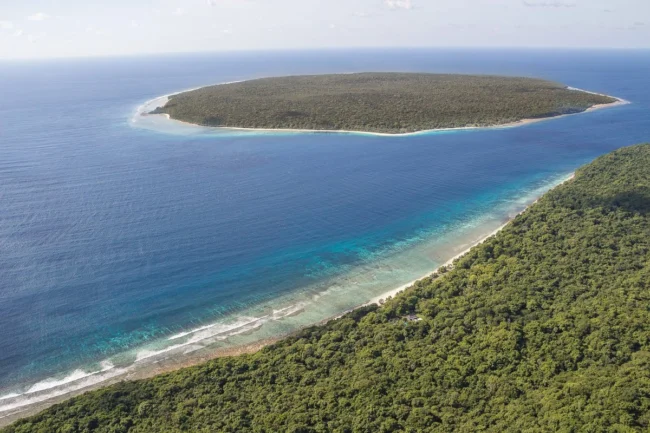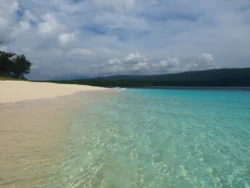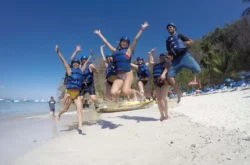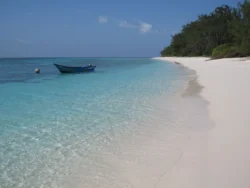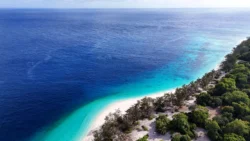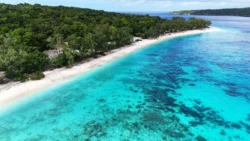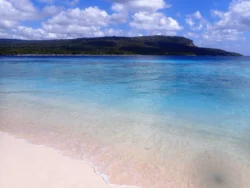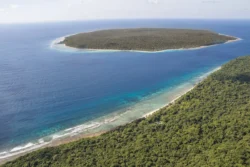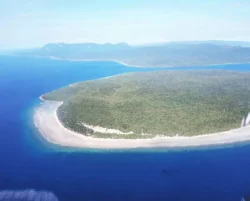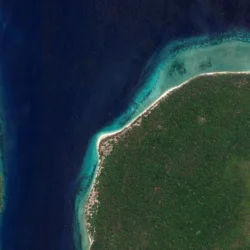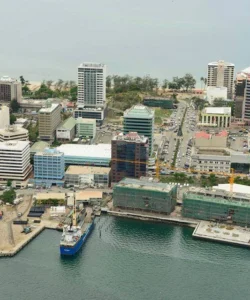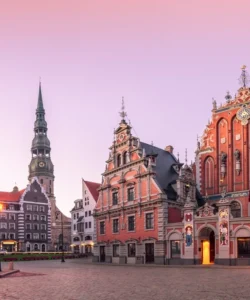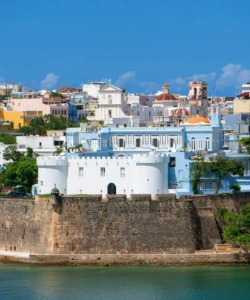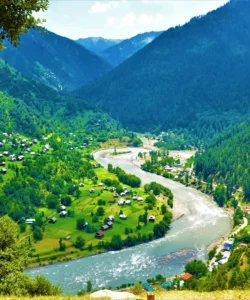Jaco Island (Ilha de Jaco in Portuguese, Illa Jako in Tetum, Totina or Tontina in Fataluku) is a pristine and uninhabited island sanctuary located at the extreme eastern tip of Timor-Leste. It’s renowned for its breathtaking natural beauty, crystal-clear waters, and profound cultural significance to the local Timorese people, making it a truly unique and untouched paradise.
Name: Jaco Island (Pulau Jaco)
Address: Off the eastern tip of mainland Timor-Leste, part of the Lautém Municipality, within the Nino Konis Santana National Park. It’s separated from the mainland by a narrow strait, approximately 600 meters wide, from Valu Beach (Pantai Walu) near the village of Tutuala.
How to Get There:
Reaching Jaco Island is an adventure in itself, involving a multi-stage journey from Timor-Leste’s capital, Dili. The journey can be challenging due to road conditions, and it’s best suited for adventurous travelers.
- By Air to Dili: International visitors generally arrive via Presidente Nicolau Lobato International Airport (DIL) in Dili.
- From Dili to Lospalos: From Dili, you can rent a 4WD vehicle (highly recommended for the rough roads) or take a public bus to Lospalos. This journey can take 5-10 hours depending on road conditions and stops. It’s often advisable to plan for an overnight stay in Lospalos.
- From Lospalos to Tutuala: From Lospalos, continue by car or bus towards the remote village of Tutuala, which is the last settlement before Jaco Island. This part of the journey can involve very rough roads and take several more hours.
- From Tutuala to Valu Beach: From Tutuala, head down to the coast to Valu Beach (Pantai Walu).
- By Local Boat to Jaco Island: From Valu Beach, you must hire a local fisherman’s boat to cross the narrow channel to Jaco Island. This short boat trip typically costs around $10 USD for a return journey. It’s crucial to negotiate the price and agree on a pick-up time beforehand. The channel can have strong currents, so it’s best to cross in the morning when the sea is usually calmer, and life jackets are advisable (though may not be readily available from local boats).
- Permit: Visitors are generally required to obtain a permit to visit Jaco Island, which can usually be arranged in Tutuala.
- Important Travel Tips: Jaco Island is a pristine, uninhabited sanctuary. There is no accommodation, no power, no fresh water facilities, and no shops on the island itself. Visitors must carry all essential supplies, including food, water, and sun protection. Overnight stays are strictly prohibited due to its sacred status.
- Best Time to Visit: The dry season (May to November) is ideal for visiting, as road conditions are better and sea crossings are generally calmer.
Landscape and Architecture:
Jaco Island’s “architecture” is almost entirely natural, a stunning showcase of pristine beaches, lush dry forests, and vibrant coral reefs. Human intervention is minimal to preserve its sacred and untouched status.
- Pristine White-Sand Beaches: The island is encircled by pristine white-sand beaches that gently slope into exceptionally clear, turquoise waters. These beaches are unmarred by development.
- Tropical Dry Forest Interior: The island’s interior is densely covered by tropical dry forest, intermixed with coastal strand vegetation. While lush, it’s distinct from the humid rainforests found in other parts of Southeast Asia. You’ll find coconut palms, eucalyptus, and robust scrub and grass.
- Low-Lying Island: Jaco Island is relatively low-lying, with a maximum elevation of about 100 meters (330 feet).
- Limestone Cliffs and Coral Reefs: The island is primarily made of limestone formed from coral. Its coastline features beautiful limestone cliffs and is surrounded by vibrant coral reefs.
- Meeting of Seas: Jaco Island holds a unique geographical position where the Banda Sea (Tasi Feto, the women’s sea) meets the Timor Sea (Tasi Mane, the men’s sea), including the Wetar Strait to the north. This confluence creates unique ocean conditions and contributes to the rich marine biodiversity.
- Absence of Permanent Structures: Due to its sacred status, there are no permanent human settlements, buildings, or shops on the island. The only known modern structure, a lighthouse from the Indonesian occupation period, was shut down in 2010 and later dismantled. Any “architecture” found would be remnants of ancient fortifications (like tranqueira) built by early inhabitants, or temporary shelters used by park rangers.
What Makes It Famous:
- Uninhabited Sacred Island: Jaco Island is globally renowned for being a beautiful, uninhabited island that is considered sacred by the local Timorese people. This sacred status is why overnight stays and permanent construction are forbidden, preserving its untouched natural state.
- Part of Nino Konis Santana National Park: It lies within Timor-Leste’s only national park, Nino Konis Santana National Park, which helps protect its rich biodiversity and pristine environment.
- Pristine Beaches and Clear Waters: Its stunning white-sand beaches and remarkably clear, calm turquoise waters make it a paradise for swimming, sunbathing, and relaxation.
- Excellent Snorkeling and Diving: The surrounding coral reefs are healthy and teeming with diverse marine life, making it an excellent spot for snorkeling and diving. While not as extensively surveyed as Atauro, its waters are part of a highly biodiverse region.
- Unique Cultural Significance: The island holds deep cultural and spiritual importance to the local Fataluku people, who believe it’s where the two seas meet and where ancestral spirits reside, adding a profound mystical aura.
- Important Bird Area (IBA): Jaco Island is recognized by BirdLife International as an Important Bird Area, supporting populations of unique and rare bird species endemic to the region, such as bar-necked cuckoo-doves, pink-headed imperial pigeons, and Timor sparrows.
- Untouched Paradise: It offers a truly “off the beaten path” and unspoiled tropical island experience, appealing to travelers who seek pristine nature far from mass tourism.
- Sea Turtle Nesting: The beaches in the southeast of the island are used by sea turtles for nesting, highlighting its ecological importance.
Differences from Atauro Island:
While both Jaco and Atauro Islands are beautiful islands in Timor-Leste known for their marine life, they have several key differences:
- Inhabitation:
- Jaco Island: Completely uninhabited. No permanent residents, no accommodation, no facilities. This is due to its sacred status.
- Atauro Island: Inhabited by approximately 12,000 people in various villages. It has guesthouses, eco-resorts, and some basic infrastructure.
- Sacred Status & Overnight Stays:
- Jaco Island: Strictly sacred, no overnight stays permitted for anyone.
- Atauro Island: Has areas of cultural significance, but overnight stays are common and encouraged, with various accommodation options.
- Landscape/Topography:
- Jaco Island: Low-lying (max 100m elevation), flat coral atoll with tropical dry forest.
- Atauro Island: Much more rugged and mountainous, with Mount Manukoko reaching nearly 1000m. It’s a volcanic island.
- Marine Biodiversity (Specific Claim):
- Jaco Island: Known for excellent snorkeling/diving and rich marine life, part of the Coral Triangle, with specific bird species.
- Atauro Island: Holds the specific distinction of having the “world’s highest reef fish biodiversity” recorded at individual sites.
- Accessibility & Development:
- Jaco Island: Reaching it is a longer, more arduous journey involving very rough roads and a short boat trip from the mainland’s eastern tip. Infrastructure is minimal.
- Atauro Island: While still remote, it’s more accessible from Dili with various ferry options and even MAF flights. It has a more developed, albeit still eco-focused, tourism infrastructure.
- Primary Appeal:
- Jaco Island: Primarily appeals as a truly untouched, deserted sacred island paradise with pristine beaches and snorkeling, emphasizing extreme isolation and cultural respect.
- Atauro Island: Appeals as a more developed ecotourism destination with world-class diving and snorkeling, hiking opportunities, and unique local cultural interactions (villages, Protestant communities).
In essence, Jaco Island offers a more raw, untouched, and culturally restrictive (due to its sacred nature) experience, focusing purely on its pristine beaches and unique cultural sanctity. Atauro Island, while still very natural, provides a deeper dive into marine biodiversity, cultural immersion, and offers more diverse activities and basic amenities for a longer stay.
Jaco Island Photos:
